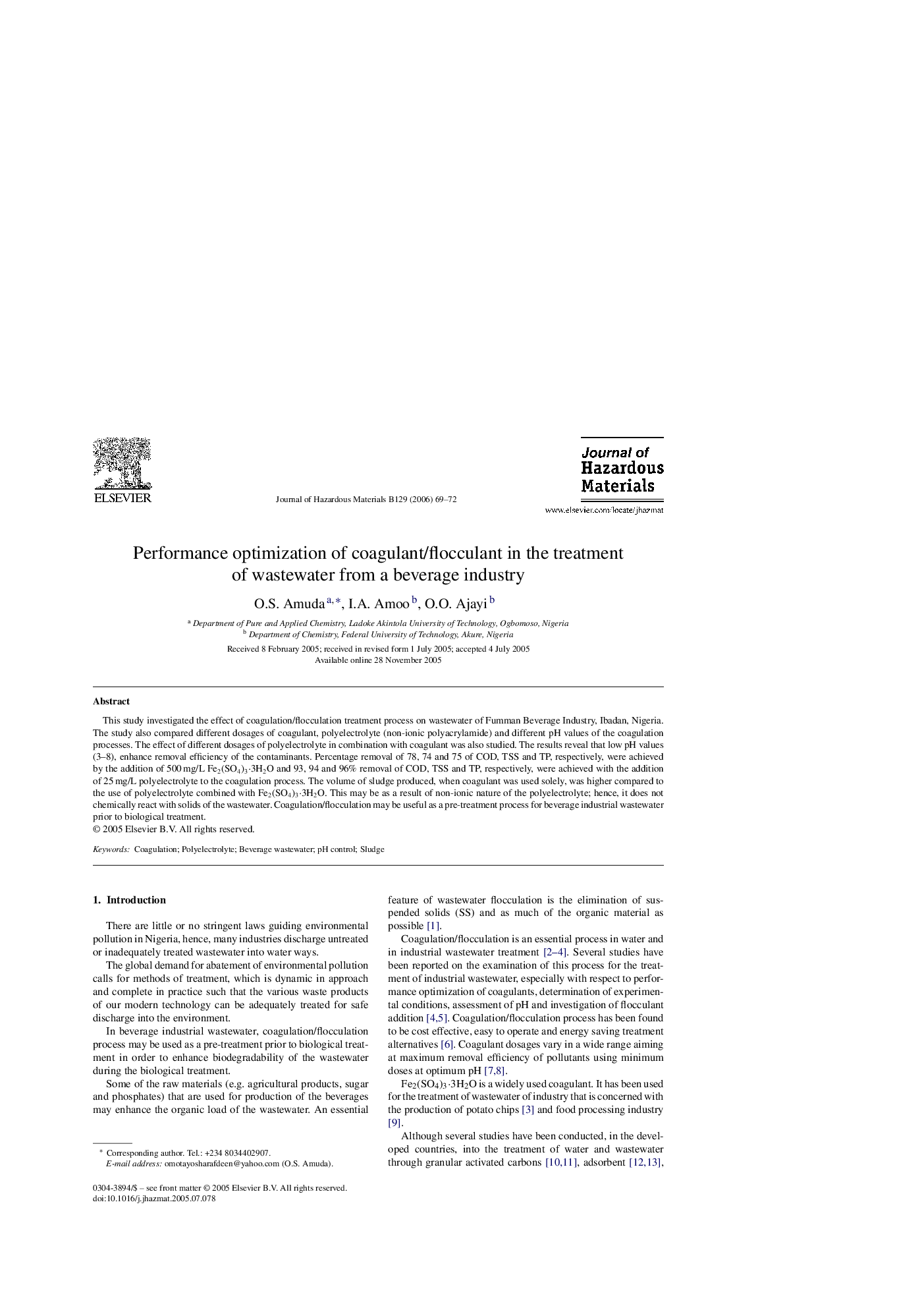| Article ID | Journal | Published Year | Pages | File Type |
|---|---|---|---|---|
| 585644 | Journal of Hazardous Materials | 2006 | 4 Pages |
This study investigated the effect of coagulation/flocculation treatment process on wastewater of Fumman Beverage Industry, Ibadan, Nigeria. The study also compared different dosages of coagulant, polyelectrolyte (non-ionic polyacrylamide) and different pH values of the coagulation processes. The effect of different dosages of polyelectrolyte in combination with coagulant was also studied. The results reveal that low pH values (3–8), enhance removal efficiency of the contaminants. Percentage removal of 78, 74 and 75 of COD, TSS and TP, respectively, were achieved by the addition of 500 mg/L Fe2(SO4)3·3H2O and 93, 94 and 96% removal of COD, TSS and TP, respectively, were achieved with the addition of 25 mg/L polyelectrolyte to the coagulation process. The volume of sludge produced, when coagulant was used solely, was higher compared to the use of polyelectrolyte combined with Fe2(SO4)3·3H2O. This may be as a result of non-ionic nature of the polyelectrolyte; hence, it does not chemically react with solids of the wastewater. Coagulation/flocculation may be useful as a pre-treatment process for beverage industrial wastewater prior to biological treatment.
